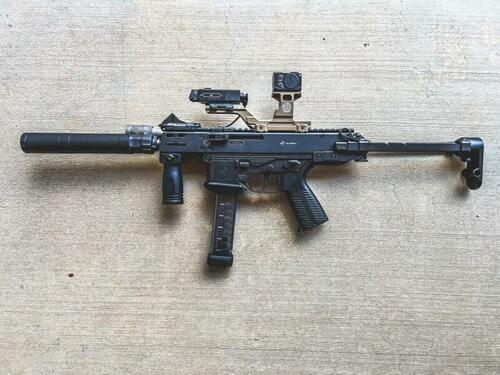By Aidan Johnston, Director of Federal Affairs for Gun Owners of America,
The Department of Justice under Attorney General Pam Bondi is defending one of the most outdated and constitutionally suspect gun control measures still on the books: the National Firearms Act of 1934 (NFA) and its restrictions on suppressors. In the Peterson case, now before the Fifth Circuit, DOJ has argued that NFA gun registration and other restrictions are valid despite acknowledging that suppressors fall within the Second Amendment’s protections.
The facts are simple. Peterson involved an individual who possessed an unregistered suppressor for home defense. Suppressors are widely used for lawful purposes: reducing noise at firing ranges, protecting hearing during hunting, and improving safety during home defense. With more than 3.5 million legally registered suppressors in the United States today, ATF data shows they are rarely used in crimes. In fact, there are fewer than 50 federal prosecutions annually involving suppressors.
By any objective measure, suppressors are in “common use” for lawful purposes.
Yet DOJ has defended the NFA’s registration requirements by reviving an argument borrowed from California’s standard capacity magazine ban case.
In briefs, the Department insisted that suppressors are “specially adaptable to criminal misuse.” By that logic, any tool that makes a firearm more effective—whether a scope, a magazine, or even the firearm itself—could be subjected to sweeping restrictions. The DOJ’s standard is not grounded in the text of the Second Amendment or in Supreme Court precedent. It is simply a policy preference disguised as constitutional analysis.
Justice Clarence Thomas warned against this very approach in New York State Rifle & Pistol Association v. Bruen. The Court rejected “interest balancing” tests that allowed judges to weigh government interests against enumerated rights. The Second Amendment, the Court held, means what it says. If a firearm or accessory is commonly used for lawful purposes, it cannot be banned or restricted simply because the government believes criminals might misuse it.
Bondi’s DOJ has not embraced that principle. Instead, it has defended suppressor restrictions by adopting the same rationale that anti-gun litigators have advanced for years. The result is that under a pro-Second Amendment president who issued an executive order directing agencies to protect gun rights, DOJ is still fighting to preserve a Depression-era law written in 1934 to discourage ownership through taxes and registration paperwork.
The inconsistency is jarring. President Trump has repeatedly promised to dismantle Biden-era infringements and restore constitutional protections. Yet Bondi’s DOJ is telling courts that suppressors are dangerous tools deserving of special regulation. That position does not reflect the President’s agenda or the reality of suppressor ownership in America. Instead, it reflects a commitment to institutionalism—where politicians compromise their political views for the sake of defending the perceived institutional integrity of a government bureaucracy even at the expense of our constitutional rights.
The practical consequences are serious. If DOJ’s argument prevails, millions of law-abiding suppressor owners will continue to be treated as potential criminals unless they navigate an onerous registration system and wait months or even years for approval. New buyers will be deterred by the process, and the constitutional right to own a common firearm accessory will remain constrained by red tape.
Pam Bondi’s DOJ could take a different position. It could acknowledge that suppressors are in common lawful use, that the NFA’s restrictions no longer serve a legitimate purpose, and that the Second Amendment protects these accessories just as it protects firearms themselves. By defending the NFA’s outdated scheme, DOJ is not safeguarding the public—it is entrenching governmental control over rights the Constitution guarantees.
The Peterson case offers a clear test of whether this administration’s Department of Justice will align its litigation strategy with the President’s promises. So far, the signs are discouraging. DOJ’s arguments echo those of the very administrations President Trump campaigned against. Until Bondi’s Department changes course, suppressor owners and the broader firearms community will continue to face restrictions rooted not in the Constitution, but in the government’s reluctance to let go of a law written nearly a century ago.
Loading recommendations...
